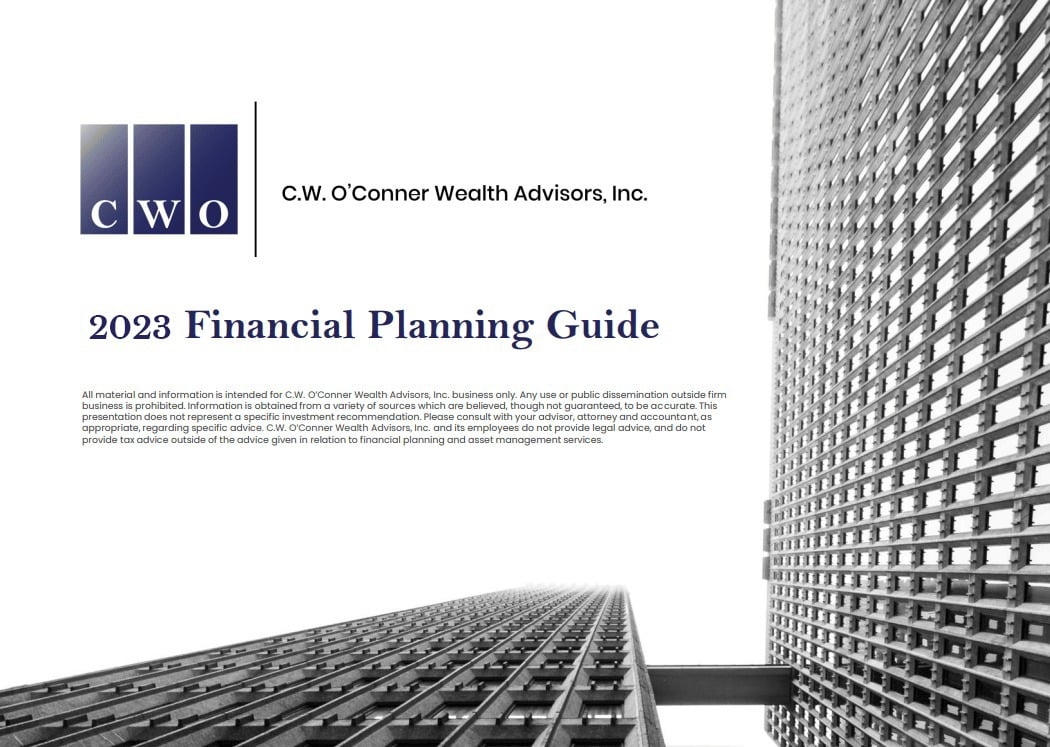
Succession planning is one of those things that many owners know is important, but often don’t get around to doing it. In fact, up to half of small business owners who plan to retire in the next five years say they have not yet named a successor, according to the Service Corps of Retired Executives (SCORE).*
Succession planning for small businesses can be as challenging as starting the business in the first place. For some owners, the biggest challenge is facing the reality that one day they will have to hand the reins over to someone else. But failing to plan for small business succession can leave owners ill-prepared for the next stage of their life while also jeopardizing the future of the business
What is Succession Planning?
Succession planning is the process of thinking and making decisions about how your ownership stake will be transferred once you leave the business. Your departure from the business could be voluntary — for example, you want to retire or start another business venture — or involuntary, such as in the case of death or disability.
One of the biggest keys to succession planning for small businesses is to start the process well in advance. It’s never too early to start thinking about your small business succession plan, but many experts say that succession planning should ideally begin no later than two to three years before you plan to exit the business. This will maximize your control over your business exit and possibly give you the best options to choose from.
Why is Succession Planning Important for Small Businesses?
If you’re like most small business owners, you have worked hard for many years to build your business into a successful enterprise. But it’s possible that you’ve been so focused on growing your business that you haven’t thought much about your end game. Or another way to put it: You haven’t seen the business “forest” for the “trees.”
Through the process of succession planning, you will start to devise a detailed plan for how and when you will exit the business and who will own and manage the business after your exit. For example, maybe you want to sell the business in five years and use the proceeds to start a new business venture. Or perhaps you want to retire five years from now and fund your retirement with the cash you generate from the business’ sale.
As you engage in succession planning, you will also identify potential candidates to take over the reins of your business. For example, maybe you want to pass your business on to family members, such as your children. Maybe you want to sell it to one or more key employees or executives. Or perhaps you’d like to put your business on the market and sell it to an outside buyer.
Creating a succession plan is the key to accomplishing all these critical objectives. The sooner you start the process of succession planning, the more time you’ll have to think about the details of your plan and execute the plan successfully.
Who Should Create a Succession Plan?
The short answer: Almost all business owners should create a succession plan. The main exceptions to this rule might be very small one-owner businesses and self-employed professional service providers and solo entrepreneurs with no employees.
While some owners associate succession planning mainly with retirement, succession planning should play a role much earlier in a business’ lifecycle. This is especially true when it comes to planning what will happen to the business should you unexpectedly die or become disabled and no longer able to actively participate in the business. Your succession plan will detail what happens to your ownership shares and who will take over management responsibilities in these situations.
As the complexity of your business and the number of people who will be impacted by your exit increase, so does the importance of succession planning. It is especially important in the following scenarios:
• Your business has complex processes. It’s critical that your successor(s) understand your processes and know how to keep the business running smoothly after your exit. Otherwise, operating efficiency and customer service might suffer, which could lower sales and profits.
• There are more than just a few employees. As noted above, solo entrepreneurs and businesses with just a handful of employees might be able to get by without creating a succession plan. But once a business grows beyond 10 employees or so, succession planning becomes critical to help ensure the ongoing viability of the business and employment security after your exit.
• There is more than one owner. Small businesses with two or more partners need to have a plan in place for how each partner’s shares will be liquidated upon the exit of any one partner. This is often accomplished by creating a buy-sell agreement (more details below).
• You have long-term contracts and agreements with your clients. These clients might be disappointed to learn that you are leaving the business, especially if you have established strong relationships with them. Your succession plan will detail how to communicate with clients about your exit and who will be responsible for maintaining these relationships.
4 Common Types of Succession Plans
The type of succession plan you create will depend on the specific scenario of your exit. Here are four common scenarios and the type of succession plan that accompanies each:
1. Selling to a Partner or Co-owner
If you have one or more business partners, you could sell your ownership share of the business to them. This is often the least-disruptive succession option since it doesn’t involve new owners coming in and having to learn the nuances of the business and build new relationships with customers and employees.
A buy-sell agreement is a useful tool for accomplishing this. Buy-sell agreements are legally binding documents that stipulate what will happen to a partner’s shares when he or she leaves the company. They are especially helpful for ensuring a smooth transition of ownership interest if one partner dies or becomes disabled and can no longer perform his or her duties. It helps ensure that if this occurs, your ownership will be transferred to your partners in an orderly fashion and at a pre-determined value.
Buy-sell agreements are usually funded with cash value life insurance or a disability buyout policy. They are also sometimes funded using a “sinking fund” in which partners agree to set aside money voluntarily to buy the shares of a departing, deceased or disabled partner. There are three main types of buy-sell agreements:
• Cross purchase plan — Each partner will purchase a cash-value life insurance policy on the other partners. If any partner dies, the others will use the life insurance proceeds to buy his or her business shares. This type of agreement works best when there are no more than two or three partners.
• Entity purchase plan — Instead of partners buying life insurance policies on each other, the business entity will buy the policies. If any partner dies, the business will purchase the shares and divide them among the other partners. This type of agreement works best when there are more than three partners.
• Wait-and-see plan — This is a hybrid approach that combines these types of plans. The business has the right of refusal and if it doesn’t buy the departing owners’ shares, the other partners can buy them. If they decline, the business entity must purchase the shares.
2. Passing the Business on to Heirs
If yours is a family business where children and other relatives are actively involved, your succession plan might involve passing the business on to them. This will allow you to keep your business “in the family” and preserve your legacy while handing your heirs a successful enterprise, which may provide them with ongoing financial security.
Passing your business on to heirs can be tricky, however. Your first challenge is deciding who to name as your successor. If one of your children or relatives is actively involved in helping run the business now, this might make the decision a little easier. But there could still be hurt feelings among other children or relatives who aren’t named as the successor.
Think carefully about who is best qualified to take over the leadership reins and make your decision based on this, instead of on emotions or perceived loyalties. Then start the process of training your successor so he or she is ready to lead after your exit. Clearly communicate your decision and the reasons behind it to all family members who are involved in the business to help reduce the chances that there are any hurt feelings or resentments.
3. Selling to a Key Employee
If you don’t have partners or family members who would be good successor candidates, another option might be to sell your business to a key employee or group of employees. This can also minimize disruptions since the employee or employees already knows your business and your customers well and won’t be starting the ownership tenure from scratch.
This option may be accomplished using a one-way buy-sell agreement or an employee stock ownership plan, or ESOP. With an ESOP, you can sell a minority (or non-controlling) interest in the business to key employees over time and gradually liquidate your ownership at whatever pace you desire. This way, you can retain a controlling interest in the business and remain active for a period of time.
To create an ESOP, you will first set up a trust and contribute either cash or ownership shares into it. The cash is then used to buy stock on behalf of the successor employees. The cash contributions are tax-deductible to your business and the employees won’t pay income tax on them until they receive the stock later.
One of the biggest benefits of ESOPs as a succession tool is the positive impact, they often have on employee morale, productivity and loyalty. Employee-owners tend to work harder and show greater loyalty than non-owner employees since they have some “skin in the game.” Small businesses with loyal and productive employees may enjoy a higher business valuation and sell for a higher price.
4. Selling to an Outside Party
If passing your business on to partners, family members or key employees isn’t a good option, then you will probably want to sell your business to an outside party. This might be another business in your industry that’s looking to expand its operations or a competitor looking to grow market share by acquiring your business.
If you plan to sell to an outside party, you should begin preparing for this well in advance by focusing on specific value drivers that will help boost the value of your business when you’re ready to sell. Business buyers are usually looking for certain characteristics in the businesses they acquire that will increase their return on investment. By focusing on these value drivers, you can increase your business valuation and eventual selling price:
• Financial performance — Business acquirers mainly want to see steady revenue growth, high margins and consistent cash flow. So, pay close attention to KPIs like return on equity (ROE), return on assets (ROA) and gross profit margin.
• Management strength — Acquirers are also looking for businesses with a deep management bench that is going to stick around after the acquisition to help ease the transition to new ownership. Therefore, you should invest time and effort into building your management team well before your planned exit and making sure they’re financially incented to remain with the company for the long term.
• Competitive advantages — These are the reasons why customers do business with you instead of your competitors. Sometimes referred to as a unique selling proposition, or USP, they might include high quality, low price or outstanding customer service. Focus on strengthening your USP before your planned exit and making sure it’s sustainable over the long term.
• Customer concentrations — Relying too heavily on one or a handful of large customers is a major concern for most business acquirers because losing this customer could cripple the business financially. So strive to diversify your sales and revenue among a variety of different customers instead of concentrating sales with just one or two large customers.
• Sustained growth — Business acquirers don’t want to just maintain the status quo. They are looking for businesses with strong growth potential to maximize their ROI. Work together with your management team to draft a strategic growth plan that details future growth opportunities such as tapping new niche markets or introducing new products and services.
How to Create a Succession Plan
Depending on the size and complexity of your business, you can either create a succession plan yourself or hire a business consultant to help you. Either way, there are five main steps usually involved in creating a succession plan:
1. Get Emotions in Check. Making the decision to retire and actually taking steps to retire can be two different things for business owners. You have dedicated so much time, money and energy to growing your business and finding success that it may be challenging to actually walk away from it. Many small business owners feel a sense of loss when they exit their business, so give yourself time to address your emotional and mental state surrounding retirement before creating your succession plan.
2. Determine your exit timeline and goals. Decide when you want to exit the company and what you want to achieve from your exit. For example, do you want to keep your business in the family to secure your legacy? Give key employees an opportunity to acquire and run the business? Or grow the business to boost its value and sale price to an outside acquirer?
3. Choose your successor(s). Assuming you don’t plan to sell to an outside entity, you must decide who is going to succeed you as the owner and president. Keep in mind that there’s a difference between ownership succession and management succession. For example, you could tap one family member or key employee to be the new owner and other family members or employees to be successor managers who are more involved in day-to-day business operations.
4. Formalize your standard operating procedures. There are probably a lot of processes and procedures you and your employees follow that you don’t really think about anymore because you’ve always done things this way. Before you exit the business, these standard operating procedures, or SOPs, should be formally documented so the new owners know how to follow them. For example, you might need to create an operations manual, organizational chart or employee handbook if you don’t have one.
5. Value your business. Having a formal business valuation performed by a certified valuation professional is a key part of small business succession planning. The business valuation will play a key part in many aspects of your succession plan. Most importantly, it will serve as the basis for setting a realistic sale price for your business and give you a good idea of what you can expect to receive from a buyer, whether internal (a family member or key employee) or external.
6. Prepare your business. Look for anything that may delay or negatively impact the transfer of your business. This may include an evaluation of your personal and business tax returns by a financial professional, as well as a review of any potential local or state tax issues. If you have a business presence in multiple states, this may also help avoid potential tax issues.
Now is also an ideal time to contact a tax professional if you’re thinking about restructuring your business for tax purposes. They may be able to help navigate the potential drawbacks and highlight any benefits that may result from a restructuring.
7. Plan the finances. The financial aspects of exiting your business will depend on what type of succession plan you develop. For example, if you sell your business to partners or co-owners, the buy-sell agreement will cover most of the financial details. But if you sell it to family members, key employees or an outside buyer, you might have to finance some of the purchase if they can’t obtain a business acquisition loan. Carefully consider the potential risks of owner financing before agreeing to this with an acquirer.
8. Do your due diligence. If your business’s financial documents aren’t current, now is the time to remedy that.
Standard documents to review may include:
- Incorporation documents
- Equity ownership records
- Meeting minutes
- Tax classification records
If you have equity holders, do you know if they are entitled to a right of refusal? Additionally, if your business owns any intellectual property, are you certain it’s been properly registered? The answers to these questions may have considerable implications for your transition plan.
Start thinking also about your existing business relationships. Existing long-term contracts or distribution agreements may need to be evaluated as well.
9. Include your employees. Your planning will include key leaders in your business to ensure a smooth transition. However, don’t overlook sharing your transition plan with all your employees. Have answers ready for some tough questions, as you should prepare to be as transparent as possible. Securing employee buy-in can be a powerful element to your strategy and that can lead to essential conversations with those you trust most. In fact, research has shown that 62% of employees would be significantly more engaged at work if their company had a succession plan.[3]
Remember, your business isn’t the only thing that is going to change through your transition. The livelihood of your employees and their families will be impacted as well, so it’s important to allow them to voice their concerns. Creating a safe space for open conversations may help alleviate their worry and retain your key employees.
How We Can Help with Succession Planning
If you haven’t given much thought to succession planning before, now is a good time to do so. The team at C.W. O’Conner Wealth Advisors works with business owners and their families to create succession plans based on their unique goals and objectives. Call us directly at 770-368-9919 or email Cliff at cliff@cwoconner.com or Kevin at kevin@cwoconner.com to learn more.
* https://www.score.org/resource/infographic-family-business-successes-and-obstacles
Download our 2023 Financial Planning Guide





